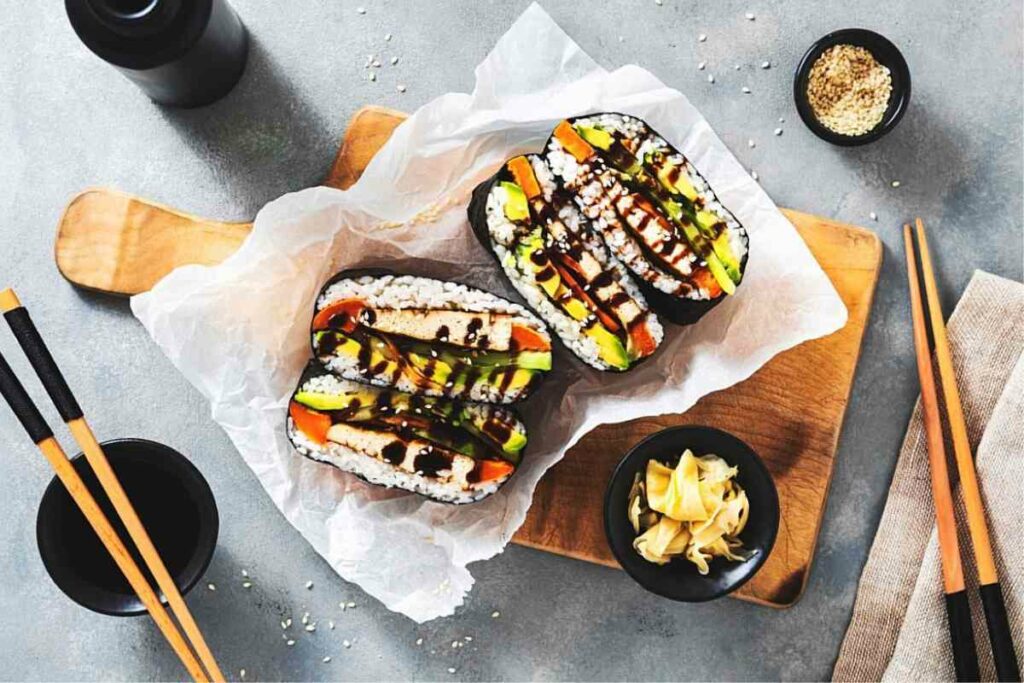This mild-flavored radish is a popular ingredient used in various Asian dishes.
Pale in color, this root vegetable is native to South Asia and is packed with immune-boosting vitamins and nutrients.

The answer to your question is yes, you can freeze daikon. Read on to find out more with some top tips along the way.
Table of Contents
Guide To Freezing
It may be helpful to know that you can freeze daikon.
For best results, you should follow the instructions set out below.
For uncooked daikon:
- Cut or grate the radishes into smaller pieces.
- Blanching in hot water for 3-4 minutes will retain the best taste and texture.
- Drain well and place into a plastic bag or an airtight container.
- Place into the freezer.
If you have cooked a little too much but don’t want to waste these nutritious vegetables, all you need to do is follow the last two steps listed above.
Tip #1
If we’re being honest, we probably wouldn’t bother freezing daikon at all. While there is nothing wrong with frozen vegetables, it might not be worth the hassle. Generally, this vegetable is relatively cheap to purchase, so you won’t be throwing your money away.
If waste is at the forefront of your mind, why not try giving leftovers to family or neighbors?
How Long Will It Keep In The Freezer?
If prepared properly, frozen daikon will be fine sitting in the freezer for up to a year.
You should give the radish adequate time to thaw out before reheating and consuming. It is also worth noting that you should never refreeze any food product that has thawed out.
Tip #2

The best way to defrost daikon is to place it in the refrigerator for 4 to 8 hours.
If you are unhappy with the texture afterwards, try the following:
- Bring a pan of cold water to a medium heat.
- Add the vegetable pieces and leave for 2 minutes.
- Remove from the pan and allow them to cool down.
- Slice into chunks and immerse in cold water for ten seconds.
Why Should I Blanch It?
These tasty radishes are packed full of nutrients which are better preserved when blanched.
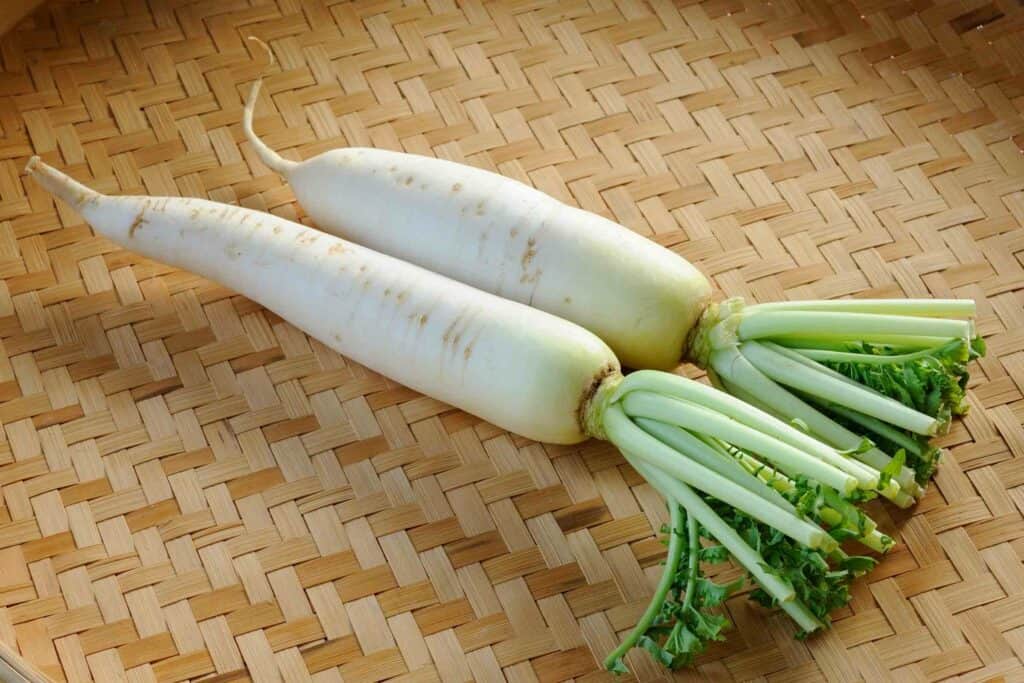
By all means, feel free to freeze them without boiling in hot water; however, the texture and taste may spoil.
Can It Be Refrigerated
Absolutely! The best way to store daikon this way is to wrap it in a brown bag or plastic wrap to lock in freshness.
Once refrigerated, you should eat within 1 to 3 weeks.
Booking.comWhat Does It Taste Like?
Daikon is known for its juicy, sweet taste.
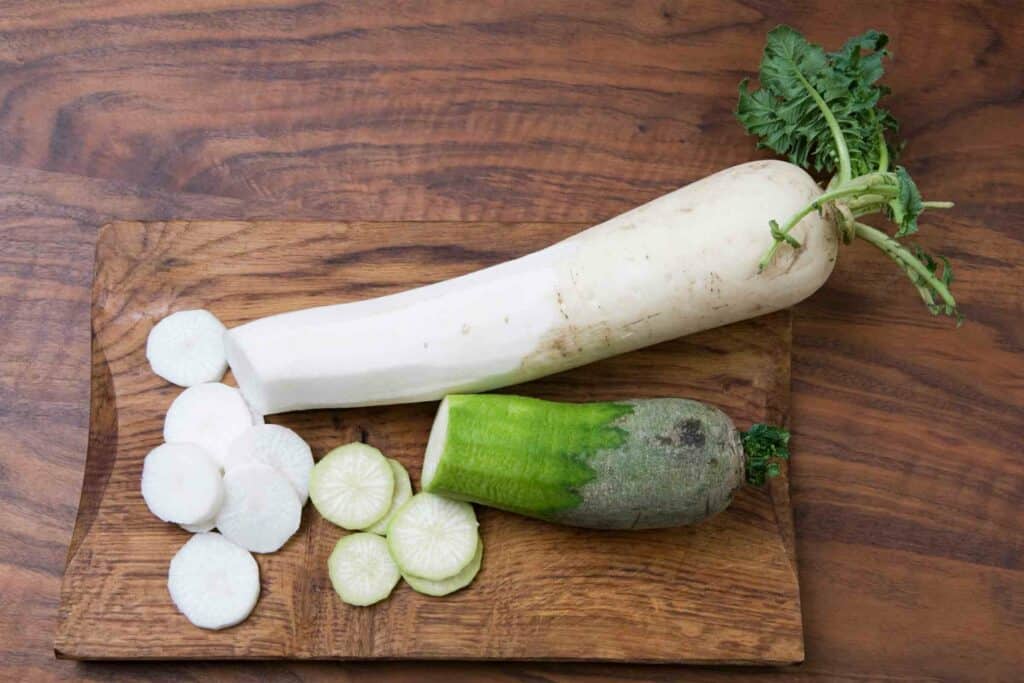
This crunchy vegetable can be used in salads and is an excellent addition to hot dishes such as soups and stews.
When cooked, it becomes incredibly tender and is not dissimilar to a turnip.
The green variety has a peppery taste that becomes milder once cooked.
Tip #3
This nutrient-packed veggie can be eaten raw or cooked. If eating raw, shred and serve in a salad.
How To Use Daikon When Cooking
There are hundreds, if not thousands, of recipes for delicious dishes that contain this nutritious veggie.
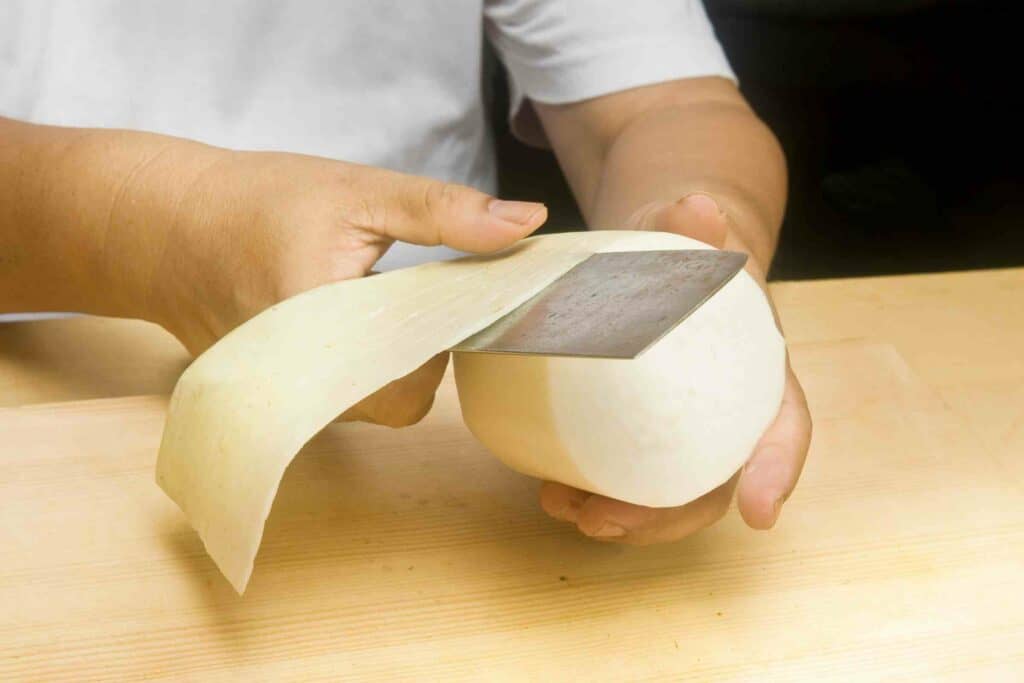
Here are a couple of our favorite picks that we think make the cut.
Daikon salad with a creamy sesame dressing
Ingredients:
- Daikon 400g
- Sprouts 50g
- Shredded seaweed for topping (optional)
For the sesame dressing:
- 2 tbsp sesame seeds
- 2 tbsp mayonnaise
- 2 tbsp soy sauce
- 1 tbsp white rice vinegar
- 1 tbsp brown sugar
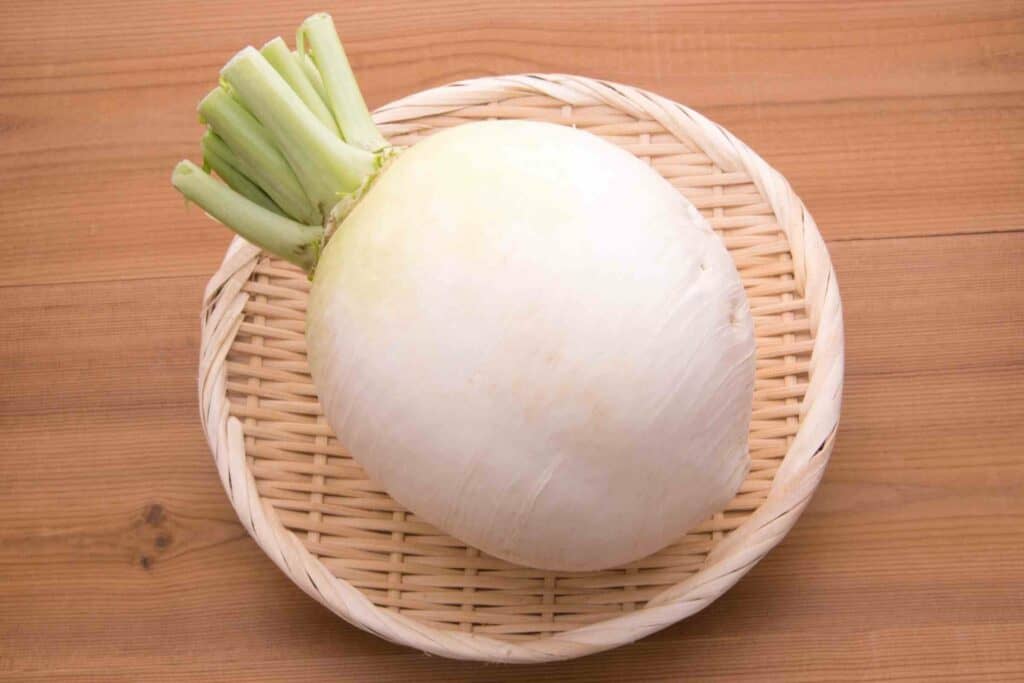
Method:
- Peel and shred the daikon using a grater. Next, remove the root from each sprout and chop into thin discs. Leave to one side to prepare the dressing.
- Take a small bowl or a mason jar and mix the dressing together.
- Add the daikon and the sprouts and mix well. If the dressing is combined inside a mason jar, you can add the vegetables and shake well.
- To finish off, top with shredded seaweed and serve immediately.
Japanese Miso Soup
Ingredients:
Method:
- Peel and chop the daikon into small chunks, then take the aburaage and cut it into thin strips.
- Remove the unwanted parts of the niboshi.
- Bring a pan of water to the boil over a medium heat and add the daikon, aburaage, and niboshi.
- Lower the heat and simmer until the chunks of daikon become tender.
- Once tender, add the leaves and cook for 60 seconds.
- Turn off the heat and stir in the miso.
How To Preserve
If you are not one to waste food, then preserving is the way forward.
Not only does this save a dollar or two, it means you will always have something to grab quickly if you are always on the go.
Preservation method
The best way to preserve this delicious radish is to salt generously and leave them out in the sun to dry.

This is known as the sun-drying method and can be a lengthy task – particularly if you live in a location where the appearance of the sun is rare!
Alternatively, you can press dry them, dehydrate them using your oven (at a low temperature), or you can place them inside the refrigerator to let them dry out.
Some of these options take more time than others. It just depends on how hungry you are!
We have also compiled a list of mouth-watering ingredients to add to your daikon once it has dried out.
- Sesame oil
- Chilli flakes
- Garlic
- Salt
- Soy Sauce
- Five-spice
- Brown sugar
Tip #4
Store-bought preserves are often loaded with salt, sugar and MSG. Making a homemade batch is much healthier and gives you the chance to get creative with ingredients.
The Final Say
This versatile vegetable will be perfectly fine living in your freezer if you find you have some leftover.
We’d rather it be frozen in time than decomposing in the trash!
Be sure to follow the correct freezing instructions to preserve them correctly.
If not, you may find the taste and texture slightly different from when bought fresh from the store.
You Might Also Read
- Japanese Traditional Sweets (Wagashi): A Guide to Their Origins and Varieties
- A Taste of Japan in Every Bite – Japanese Candy & Snack Box Review
- Bubble Tea vs Boba Compared: What’s the Difference?
- Best Izakaya Foods for a Relaxed Night Out (My Top 10 Picks)
- Edo Kiriko Whiskey Glasses (Japanese Heritage in Every Pour)
- Japanese Viral Foods on Social Media (Discover the Top 10)






